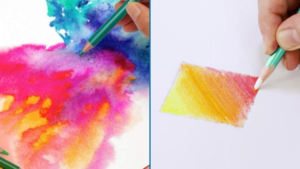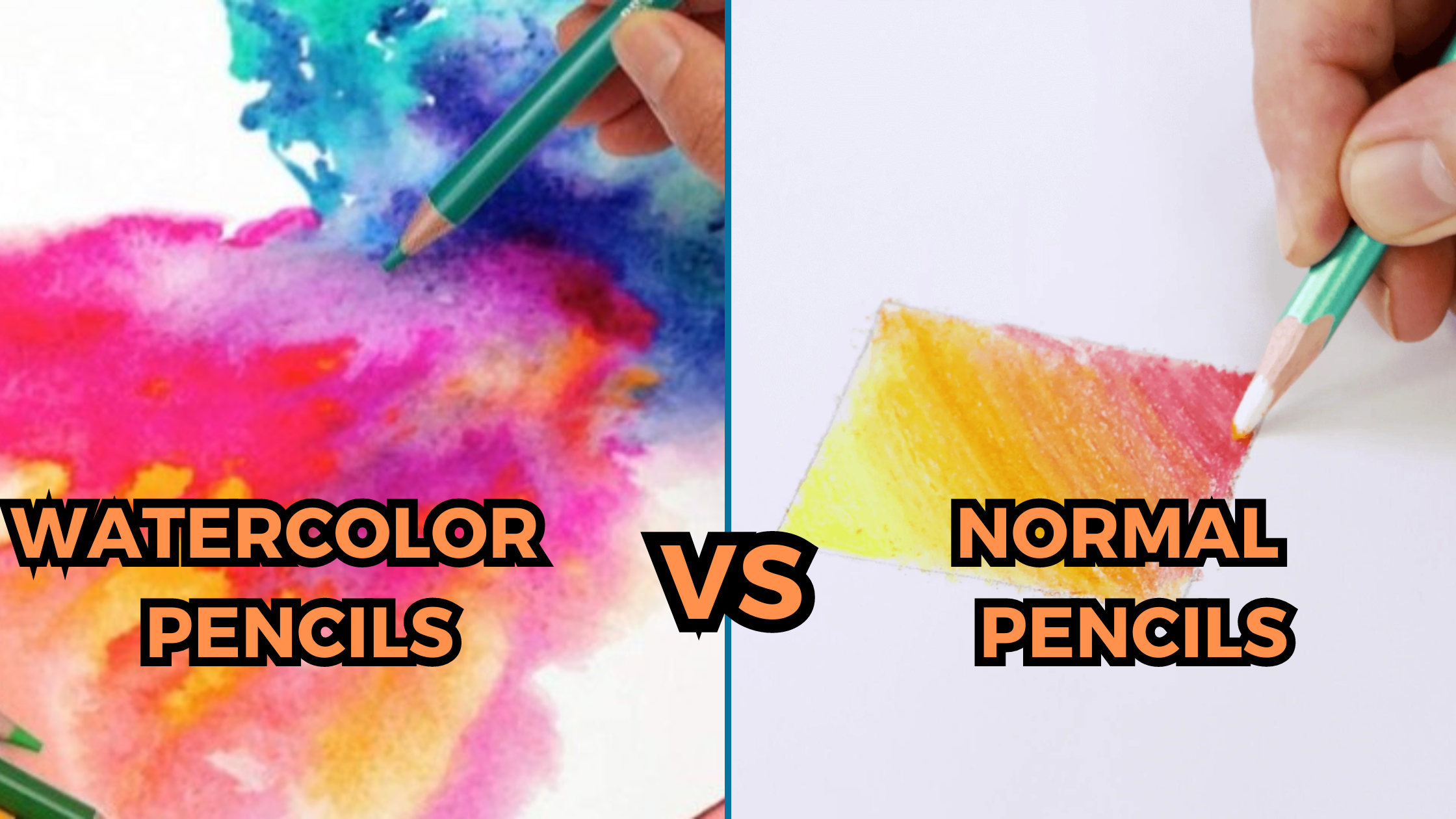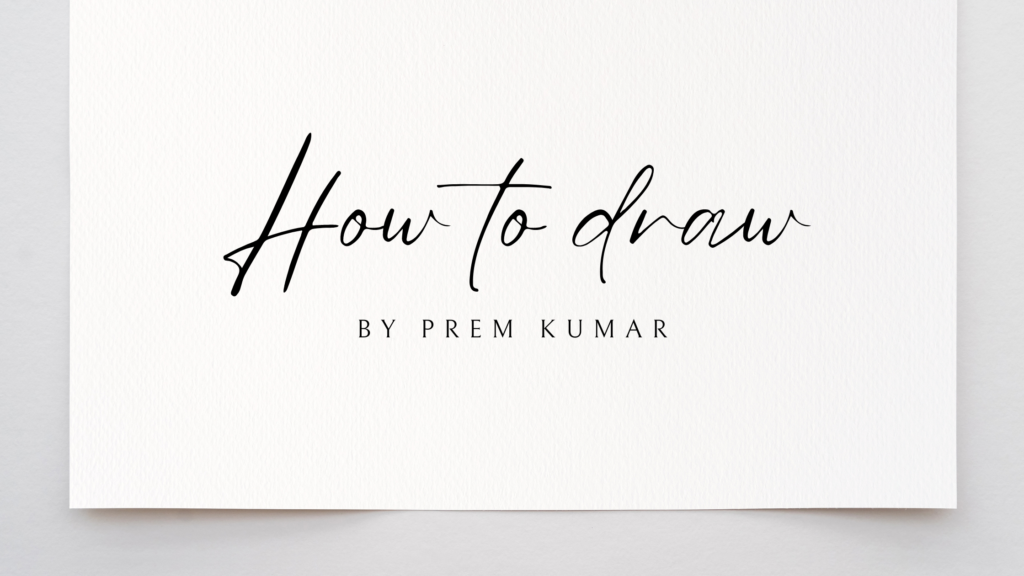For over a decade, pencils have been my artistic companions, guiding me through a wide range of mediums as I seek new ways to express myself. An ongoing debate in the art world revolves around the use of watercolor pencils versus traditional pencils. While each has its own merits, the crux of the matter is their inherent characteristics and the distinct results they can produce on canvas or paper.

Understanding the Fundamentals:
To understand the difference between watercolor pencils and traditional pencils, we must first understand the basics of each medium.
Traditional Pencils:
For centuries, artists have relied on traditional pencils, which are often graphite or charcoal-based. Their core is made up of graphite and clay, which provides a wide range of hardness. Because of the ease with which they can create a wide range of tones, artists frequently use different grades of traditional pencils for sketching, shading, and outlining.
Watercolor Pencils:
Watercolor pencils, on the other hand, are a relatively new invention, combining the characteristics of both colored pencils and watercolor paints. These pencils have a water-soluble core, which allows artists to apply color as they would with a traditional pencil and then activate the pigments with water for a watercolor effect.
Color Application and Control:
The primary distinction between the two is the method of applying color and the amount of control an artist has over the final result.
Traditional Pencils:
Traditional pencils provide precise control over line work, shading, and detailing. Artists can produce a wide range of tones by applying varying degrees of pressure to the pencil. However, achieving a watercolor-like effect with traditional pencils alone can be difficult.
Watercolor Pencils:
These pencils combine the best of both worlds. Artists can use them as regular colored pencils, gaining control and precision. When water is added, the pigments dissolve and transform into a fluid medium, allowing for blending, gradients, and the characteristic luminosity of watercolors.
Versatility and adaptability:
Depending on the desired outcome and personal preferences, the versatility of each medium plays a critical role in an artist’s choice.
Pencils:
Pencils have traditionally been used for detailed drawings, technical sketches, and controlled, fine lines. Traditional pencils, on the other hand, may fall short when it comes to covering large areas or creating vibrant, expressive pieces.
Watercolor Pencils:
Watercolor pencils are extremely versatile. They can work in a variety of styles and techniques, ranging from detailed illustrations to expressive paintings. Artists can choose to use less water for a subtle effect or more water for a bold, painterly appearance.
Layering and blending:
Blending and layering are essential techniques for creating depth and dimension in any artwork. Watercolor pencils and traditional pencils have very different approaches to these techniques.
Traditional Pencils:
Traditional pencils are excellent for controlled layering and blending. By layering strokes, artists can gradually build up tones, achieving smooth transitions between light and shadow. Blending, on the other hand, is frequently limited to the physical act of layering and smudging.
Watercolor Pencils:
The water-soluble nature of these pencils adds a dynamic element to the blending process. Water can be applied to colored pencil strokes by artists, allowing the pigments to disperse and blend seamlessly. This property allows for a wide range of blending options, from soft transitions to bold, expressive strokes.
Conclusion:
The choice between watercolor pencils and traditional pencils ultimately comes down to the artist’s intent and personal style. Traditional pencils provide precision and control, whereas watercolor pencils offer versatility and a diverse range of expressive possibilities. As a seasoned artist, I’ve discovered that combining both mediums can yield enthralling results, allowing for a harmonious marriage of precision and fluidity on the canvas. Whether you’re sketching the fine details of a portrait or looking to unleash the vibrant energy of watercolors, the choice between watercolor pencils and traditional pencils is an artistic journey that every artist should embark on.
Read also:- 5 Best Watercolor Pencils for Artists
1. Derwent Inktense Watercolor Pencils
2. Faber-Castell Albrecht Dürer Watercolor Pencils
3. Caran d’Ache Supracolor Soft Aquarelle Pencils
4. Prismacolor Water-Soluble Colored Pencils
5. Winsor & Newton Watercolor Pencils
To learn more about art, visit SILPAVAT.IN


